Newsletter: Aperture covers a century of Latino image-making. It’s the tip of the iceberg
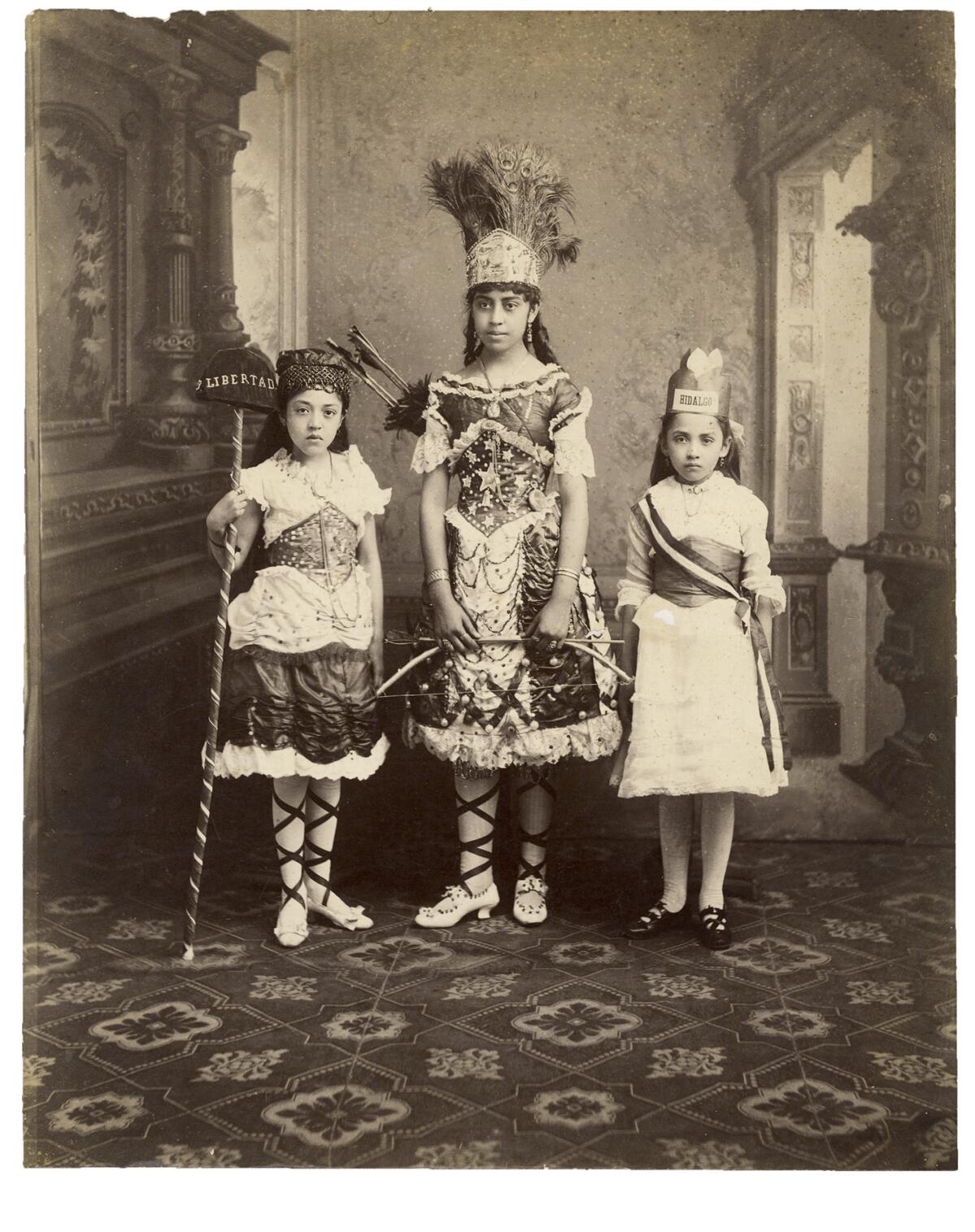
- Share via
“You can be moody, Scorpio, and intrigued by sex, death and rebirth.” How does Lisa Boone’s plant horoscope know me so well? I’m Carolina A. Miranda, arts and urban design columnist at the Los Angeles Times, and my zodiac plant is the California poppy, and I’m here, feeling golden, with the week’s essential culture news:
Picturing the unseen
In 1990, my friend José Galvez, who was then working as a photographer for The Times, took me to UCLA to check out an exhibition at the university’s Wight Art Gallery. I had no idea what we were going to see, only that José had a couple of images in the show and that afterward we’d go grab dinner.
That exhibition ended up being transformative. “Chicano Art: Resistance and Affirmation, 1965-1985,” known as CARA, was a traveling exhibition of art, photography and graphics — what was then one of the largest group shows ever dedicated to work by Chicano artists. On the lineup were key figures such as Judy Baca, Yolanda López, Gilbert “Magú” Luján and Asco. I was particularly compelled by the photography, including portraiture, street photography and conceptual pieces by Ricardo Valverde, Harry Gamboa Jr. and, of course, José, who was showing images from the ’70s. I am not Chicana — I am South American — but in that exhibition I felt as if I was finally seeing, within the context of an art gallery, people whose culture, experiences and aesthetics in some way resembled mine. People whom I knew and saw every day in L.A.
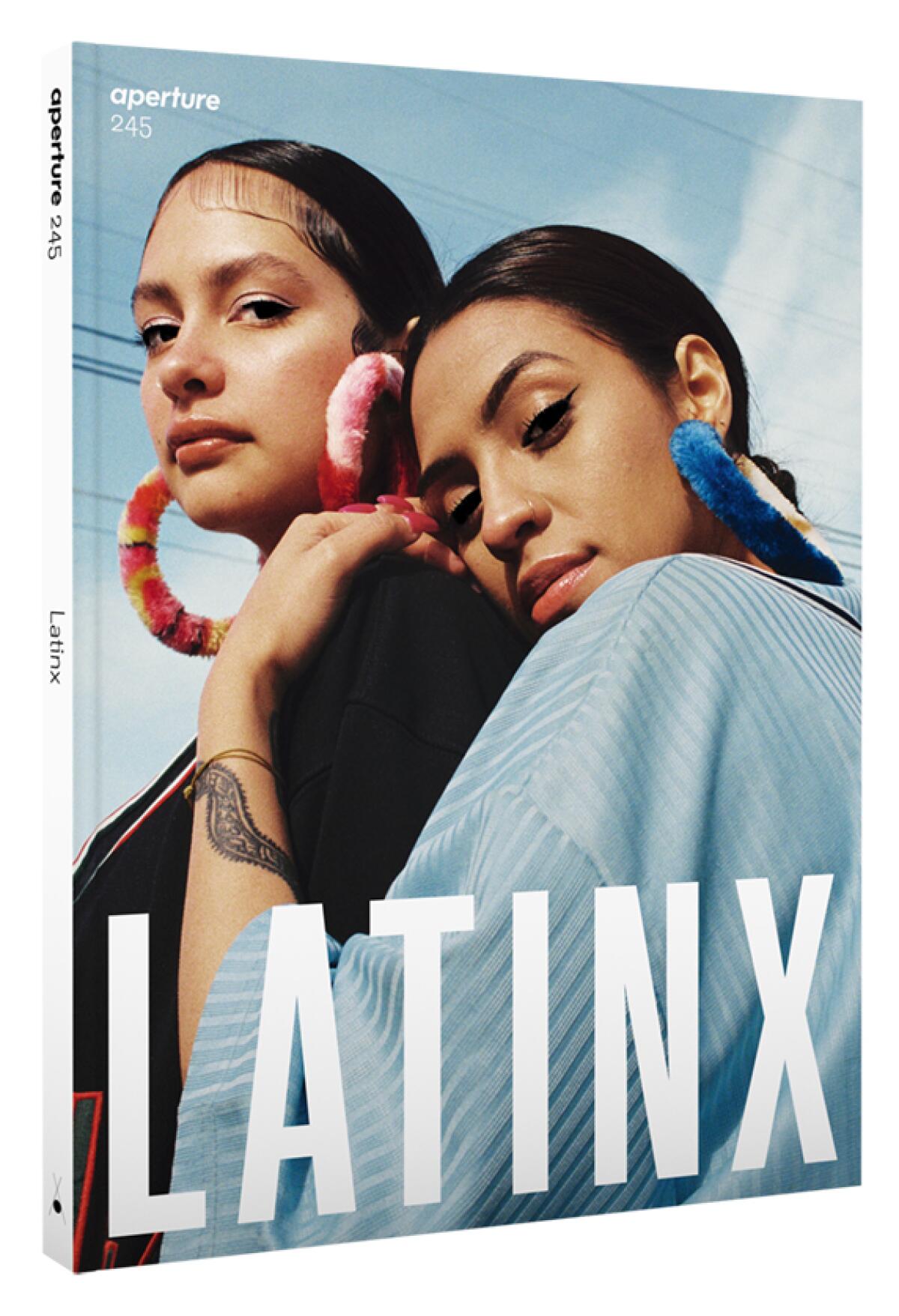
I’ve thought a lot about CARA and the importance of presence as I’ve pored over issue No. 245 of Aperture magazine, which was guest edited by Pilar Tompkins Rivas, chief curator at the under-construction Lucas Museum of Narrative Art. The magazine, which is published by the Aperture Foundation, a New York-based arts organization devoted to showcasing photography in its gallery and in standalone publications, has taken for its most recent issue the theme of “Latinx.”
The issue is compelling for a lot of reasons, but it’s particularly insightful for the ways in which it highlights how Latino visual culture has been maintained not by institutions but by so many individuals. As Tompkins Rivas notes in her introduction, vernacular photography has played a critical role in recording a community whose presence in mainstream culture remains evanescent. When asked to edit the issue, she writes, “the first pictures that came to my mind were not the many artworks and documentary images that I have had the fortune of working with as a curator, but rather the personal photographs that have helped me piece together the story of my family’s history as Latinos in the United States.”
In recent years, archives amassed by Latinx artists have been key to illuminating aspects of American culture that have been overlooked elsewhere. I think of L.A. artists such as Guadalupe Rosales, whose Instagram account Veteranas and Rucas chronicles the ’90s party crew scene (she was covered in a 2018 issue of Aperture), or Vincent Ramos, who maintains an extensive archive of Latino themes in mass media. In the current issue, Ramos’ collection is highlighted over six pages, accompanied by an essay by LACMA curator Rita Gonzalez, and features everything from the El Pollo Loco chicken mascot to a member of the Monkees dressed up as a bandido. (I would love to hang out in his files.)
Make the most of L.A.
Get our guide to events and happenings in the SoCal arts scene. In your inbox once a week.
You may occasionally receive promotional content from the Los Angeles Times.
Especially illuminating is the article devoted to the personal collection of Ken Gonzales-Day. An artist who has long engaged photography and the history of California in his work (and who currently has a show on view at Luis De Jesus Los Angeles). Gonzales-Day has spent years gathering vernacular images of Latinos in Southern California in the period that spans the 1850s to the 1950s. California seems only to exist in the U.S. public imagination after becoming a state in 1850. Gonzales-Day’s collection reveals who was here when the U.S. military rolled in.
The artist showed fragments of this collection in the group exhibition “Imagen Angeleno,” which was on view at the Museum of Art and History in Lancaster in 2017 during PST: LA/LA. But here’s hoping we get to see much more of it closer to home. (If I were a photography curator at the Getty Museum or the Huntington Library, I’d be burning a path to his door.)
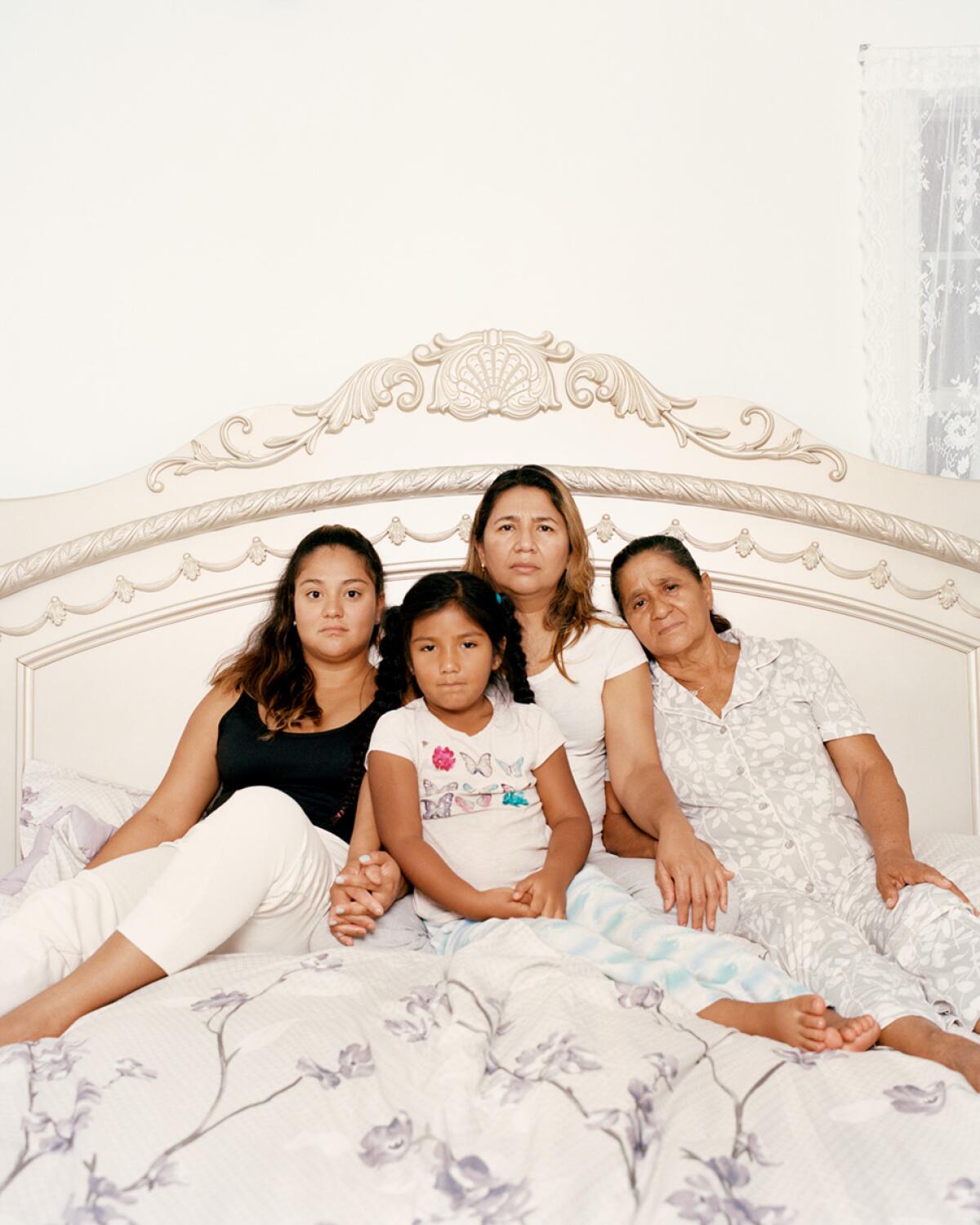
Throughout “Latinx” are portfolios of work by names familiar and not: Bibs Moreno’s saturated images of artist Gabriela Ruiz’s flamboyant personas. Louis Carlos Bernal’s stark and elegant images of Mexican Americans in the Southwest during the 1970s. Reynaldo Rivera’s cinematic chronicles of the intersecting circles of L.A. subcultures in the ’70s and ’80s. And Steven Molina Contreras’ tender photographs of his Salvadoran milieu.
I was riveted by Dominican American artist Joiri Minaya’s photographic collages, which take the tropes of tropical travel imagery and subvert them with the ugly colonialism that precedes and informs them.
“Latinx” is a thoughtful introduction to photography by Latino artists — a place to start looking into histories that have been neglected. There are too many. I, for one, have a long-running wish list of photography exhibitions. These include an examination of the photography of Asco member Patssi Valdez, who was key to chronicling L.A. bohemia in the ’70s and ’80s in deeply chromatic ways, or Nuyorican painter Juan Sánchez, who used photography to record the Puerto Rican presence in the New York streetscape — not to mention José, who for years has been chronicling the Mexican American presence in the American South.
“Latinx” will, with hope, serve not as an end but a fertile beginning. There is so much that remains to be seen.
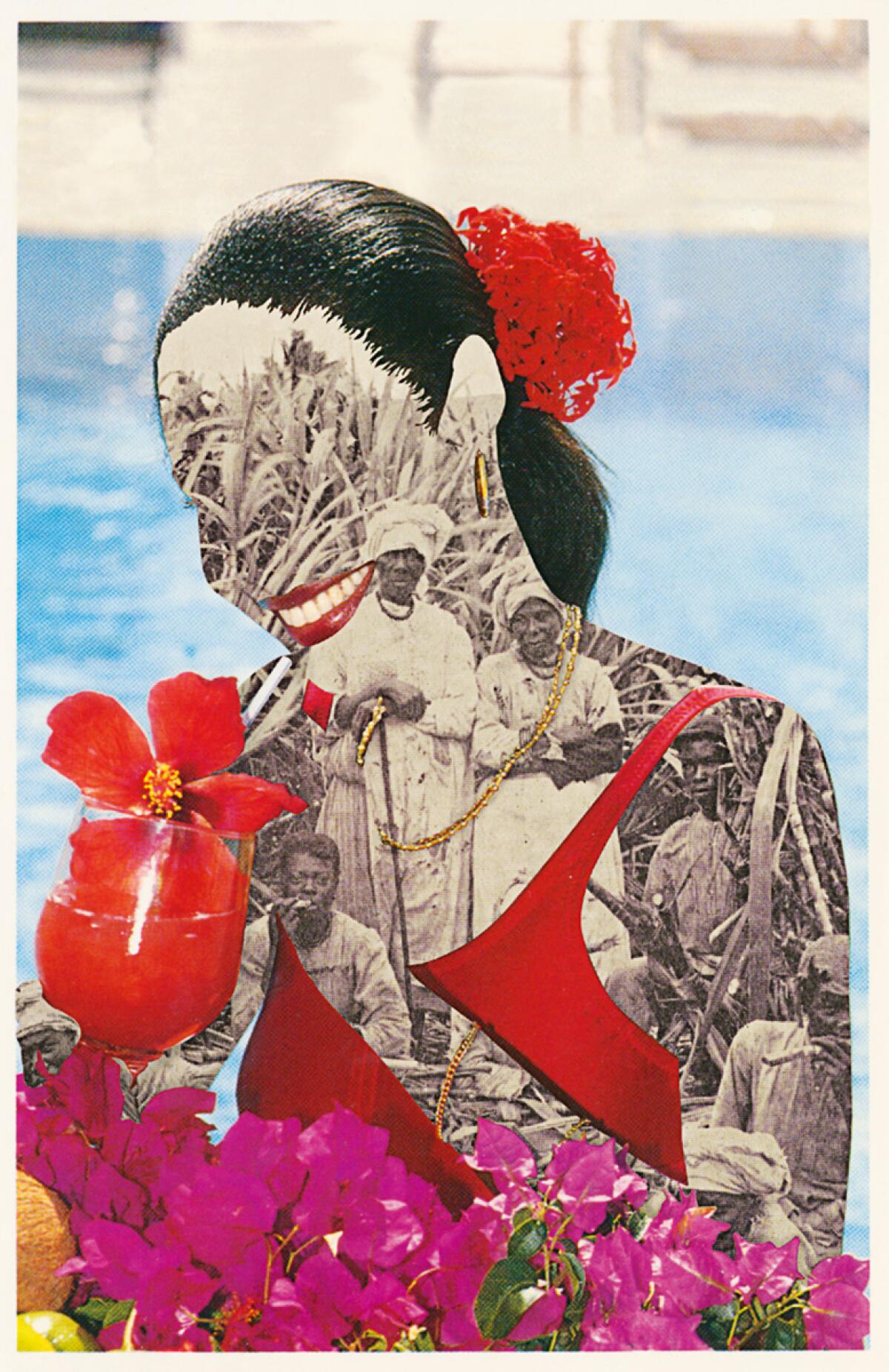
“Latinx” is available for purchase at the Aperture website. On Tuesday at 4 p.m. PT / 7 p.m. ET, guest editor Pilar Tompkins Rivas and writer Elizabeth Ferrer will discuss Latinx imagery as part of a free online program hosted by Aperture.
Art and Omicron
Omicron has inundated us like a tidal wave, and the performing arts have been especially hard hit, with some organizations postponing or canceling performances and others becoming more stringent about vaccination requirements.
Classical music critic Mark Swed recently attended a performance by the L.A. Phil led by Michael Tilson Thomas, the conductor’s first since he began treatment for a brain tumor last year. The concert, Swed writes, was “phenomenal.” But he is conflicted about promoting live entertainment at this time: “Is it a good or an ethical idea to go to a concert in the vortex of this unprecedented surge, what with local hospitals overwhelmed and understaffed and worse certain to come in the next weeks?”
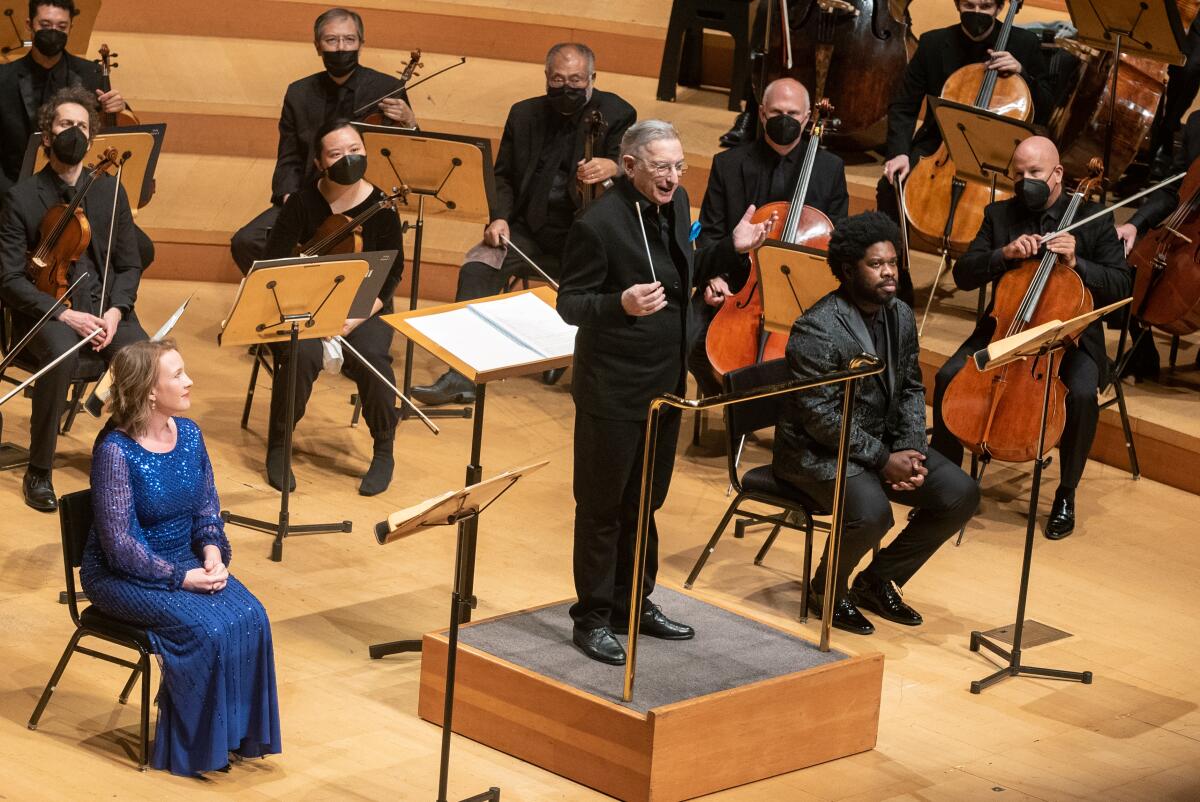
In the meantime, The Times’ Jessica Gelt reports that the Center Theatre Group is pushing forward with live shows, including the North American premiere of the musical “Everybody’s Talking About Jamie” at the Ahmanson, which kicks off Jan. 16. Even as other organizations, such as the Pasadena Playhouse and the Soraya, pivot to streaming, Gelt writes, the CTG’s “optimism remains intact.” One interesting note: The pandemic conditions are making the role of understudies critical.
On Broadway, Omicron has led to numerous shutdowns — permanent and temporary. The Daily Beast looks at how the industry and its trade unions are trying to figure out how to contend with questions of pay and vaccinations for productions that may have to go on and off as variants emerge.
Enjoying this newsletter? Consider subscribing to the Los Angeles Times
Your support helps us deliver the news that matters most. Become a subscriber.
In the museum world, MOCA is now requiring that visitors wear upgraded surgical, N95, KF94 or KN95 face masks, reports Deborah Vankin. Cloth masks will no longer be allowed.
Stage on screen
Joel Coen’s “The Tragedy of Macbeth,” which stars Denzel Washington and Frances McDormand, plus stage veteran Kathryn Hunter as the Three Witches, landed this week on Apple TV+. In his assessment, Times theater critic Charles McNulty digs into the ways in which this film is inspired by others that have adapted Shakespeare’s play to the screen — including turns by Roman Polanski and Akira Kurosawa. “Coen’s moviemaking instincts,” he writes,” guide him in ratcheting up the intrigue in a meticulously art-directed black-and-white film that is deeply indebted to other movie versions of Shakespeare’s tragedy.”
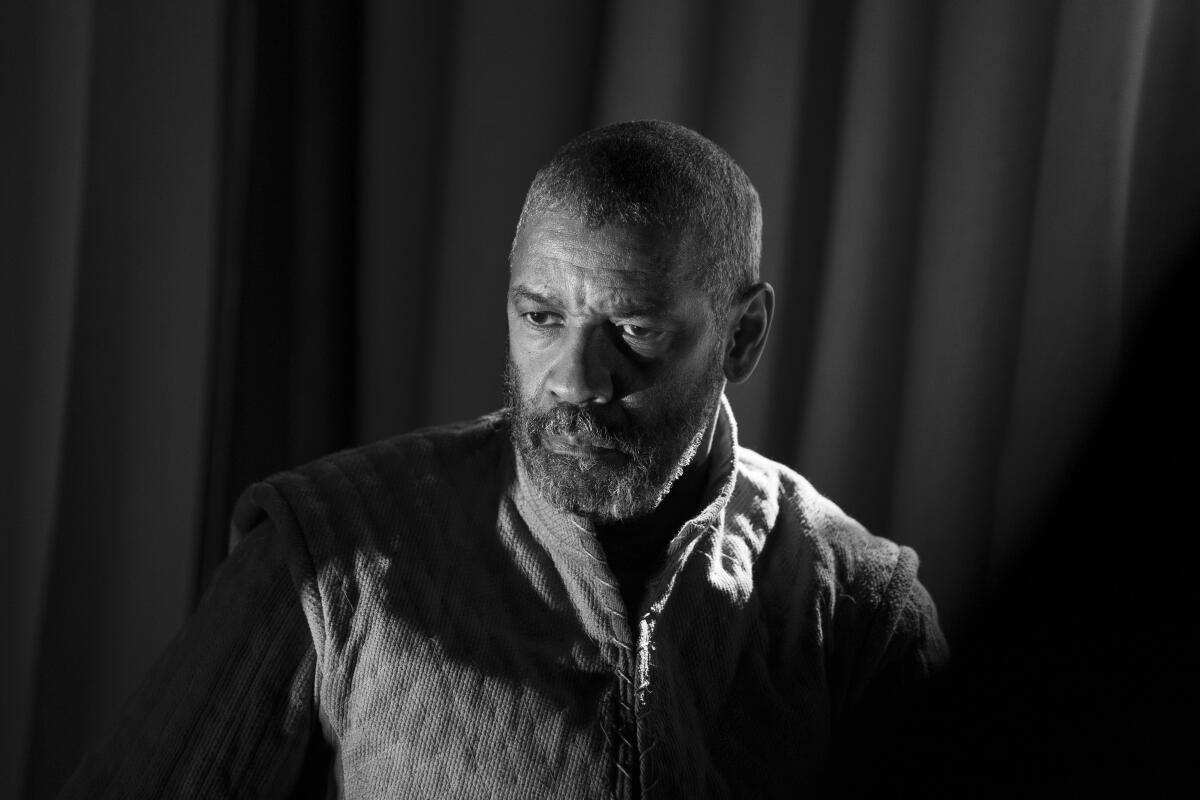
Coen tells former Times film critic Kenneth Turan that when he homed in on the idea that the play “was really a murder story, about a couple plotting a murder, I felt like I was on comfortable ground.”
In his review — written in five acts — Times film critic Justin Chang describes a picture in which “scenes flow into one another with a swiftness and elegance that builds in its own momentum. Rarely have these nightmarish events seemed more inevitable.”
Design time
The Wilshire Boulevard Temple was supposed to hold a grand opening for its new Audrey Irmas Pavilion this month, but that plan has been put on hold due to Omicron. The structure, designed by the Rem Koolhaas-co-founded Office for Metropolitan Architecture, consists of a 55,000-square-foot event space housed in a three-story parallelogram draped in a honeycomb pattern. Designed by partner Shohei Shigematsu, the building represents OMA’s first major L.A. structure, but as I note in my review, it’s a design that ultimately fails to cohere.
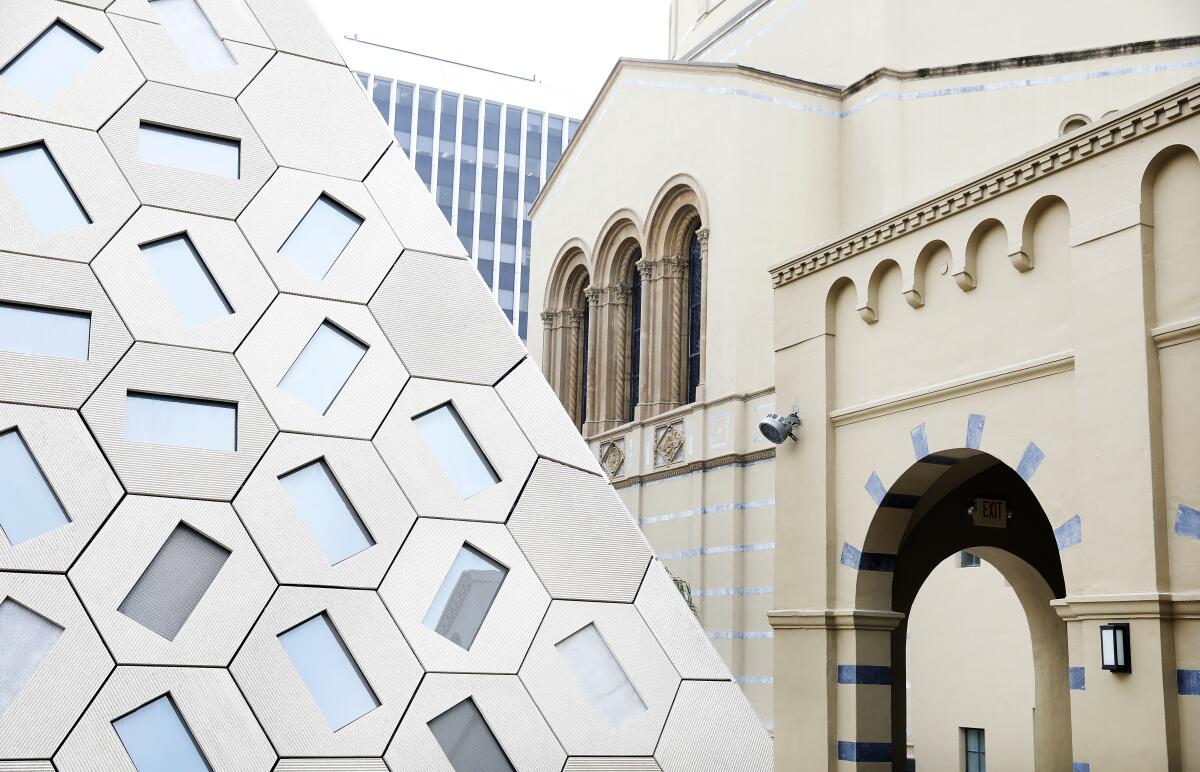
Remembering Sidney Poitier
Sidney Poitier, an actor who elevated the form and an activist who helped tear down barriers, died last week at the age of 94.
Times theater critic Charles McNulty examines Poitier’s theatrical work — specifically, his appearance in Lorraine Hansberry’s “A Raisin in the Sun,” a play that “has become a canonical work of 20th century drama,” and a role that Poitier later reprised for film. Poitier’s “presence on stage and screen,” writes McNulty, “lifted us all.”
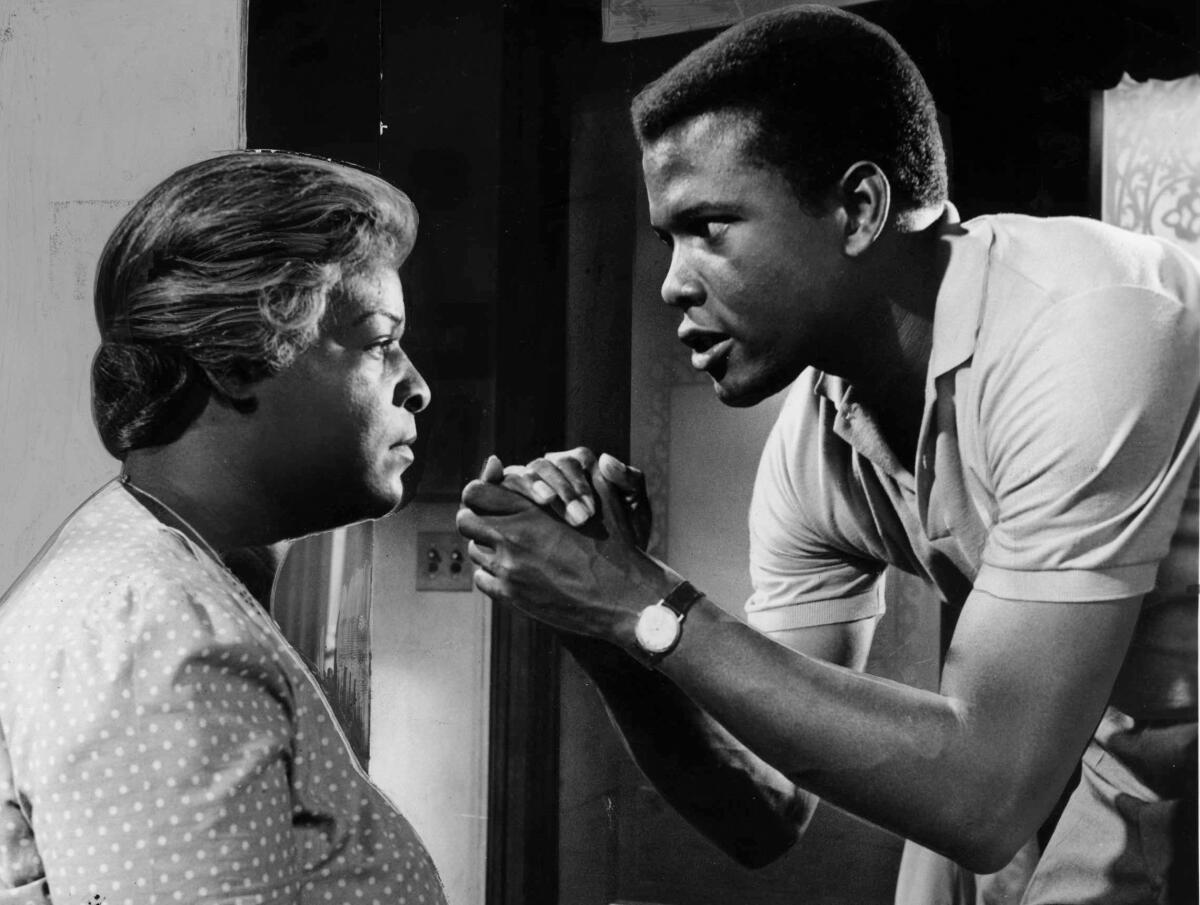
Plus, in a highly informative overview that made me want to line up every Poitier film available on a streaming service in a single queue, Justin Chang examines the actor’s cinematic roles — and the ways in which, even early in his career, Poitier was able to express “repressed pain, controlled fury and a wholly understandable, deeply human fear.”
Essential happenings
As always, my colleague Matt Cooper comes through with all the things to do: including a drag salute to “The Golden Girls” and a tango spectacular.
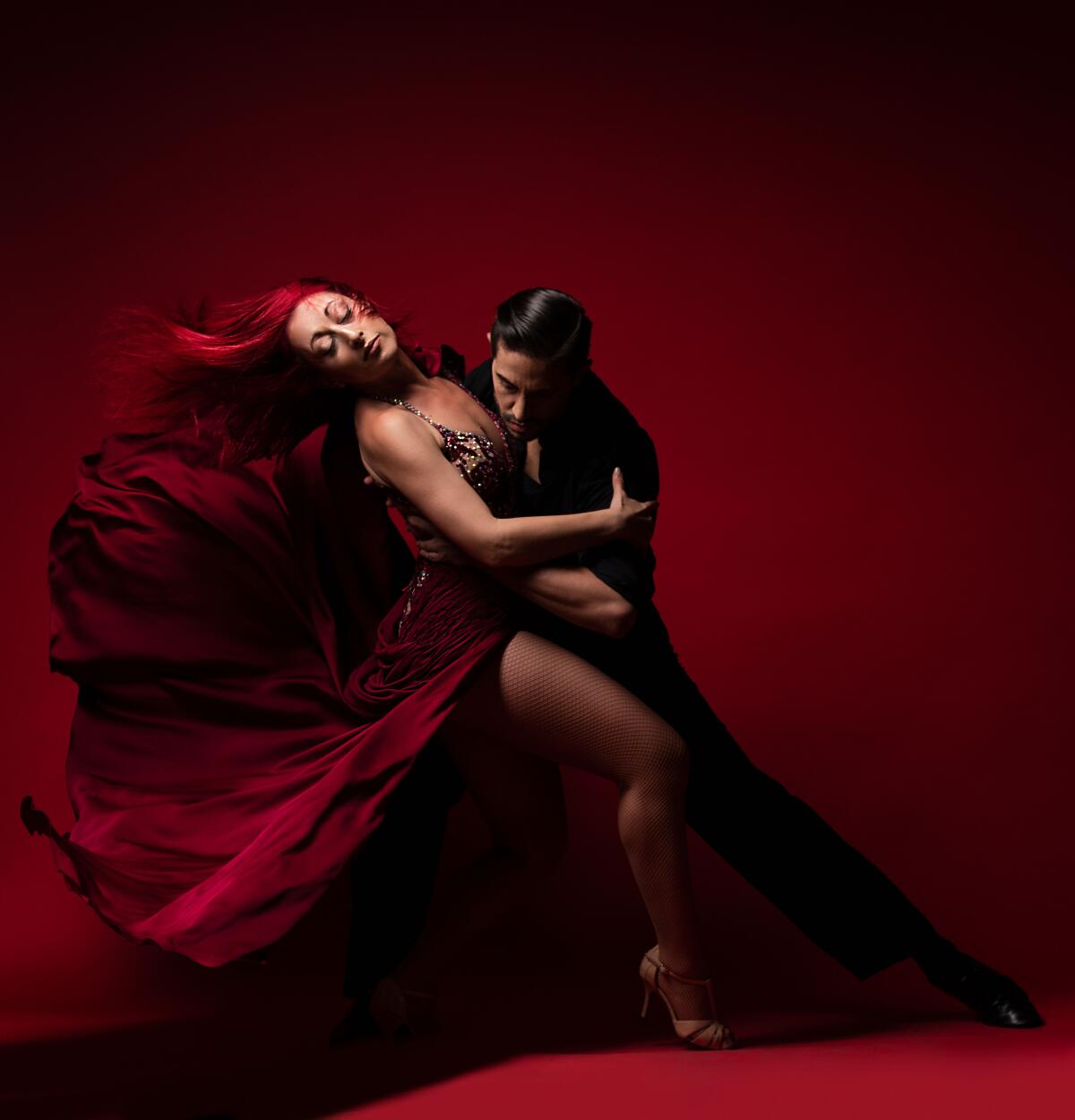
Passages
Opera singer Maria Ewing, a mezzo-soprano known for versatility and for her daring performances, has died at 71. Of her work, former Times classical music critic Martin Bernheimer once wrote: “She phrases thoughtfully, expressively. She colors the text knowingly. She sustains tension in the grand lines, paces herself cannily in the violent outbursts.”
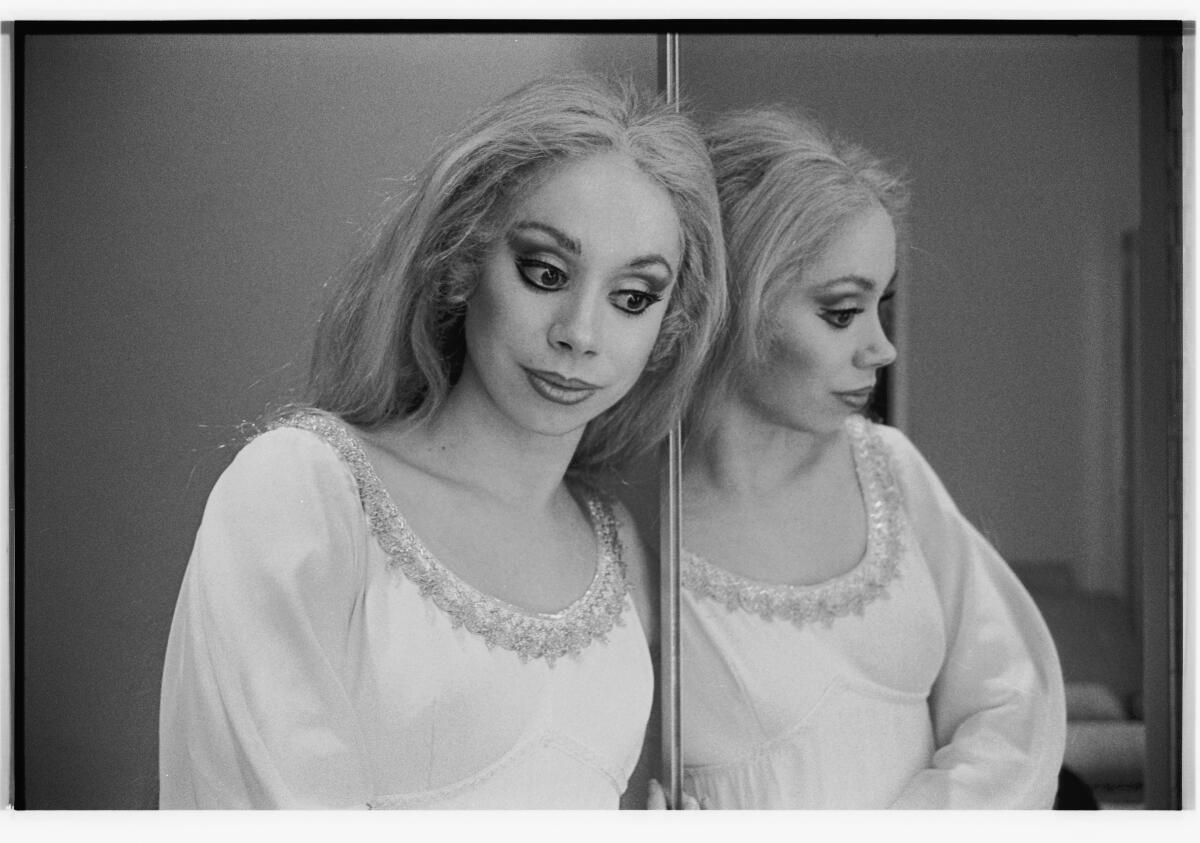
Musician Judith Davidoff, a proponent of early music who mastered historical stringed instruments, some of which had not been played for centuries, is dead at 94.
Terry Teachout, a theater critic for the Wall Street Journal who also wrote biographies of prominent jazz musicians (Louis Armstrong, Duke Ellington), as well as plays and librettos, is dead at 65.
Catalan architect Ricardo Bofill, who in a career that spanned more than half a century designed unusual buildings that managed to conjure forces both futuristic and primitive, has died at 82. The Guardian’s Oliver Wainwright has a thoughtful obit of an architect whose structures “have enjoyed a renewed appreciation as part of the ongoing pomo revival.” Among the many people they have inspired? The set designers who created the labyrinthine, candy-colored stairs for “Squid Game.”
The Marble Arch Mound, an 82-foot-high artificial hill designed by MVRDV architects in central London — a structure whose balding profile never lived up to its sylvan renderings and was therefore widely mocked by critics and the architecture nerds on social media — is dead at the age of 7 months.
In other news
— Southwest German Radio has been opening its vaults of recordings, in the process resuscitating the reputation of Hans Rosbaud, a precise conductor with little taste for fame but “who had music in his blood.” Thankfully, there is a playlist!
— Thomas Dausgaard, director of the Seattle Symphony, has abruptly stepped down mid-season. His departure comes amid tensions between the conductor and the symphony’s administrator that spilled into public view.
— Victoria Siddall, the longtime global director of the Frieze art fair, who was instrumental in launching the Los Angeles fair, is leaving after 18 years.
— Dancer Tamara Rojo, artistic director and lead principal of the English National Ballet, is headed to the Bay Area: She’ll serve as the new artistic director for the San Francisco Ballet.
— The Metropolitan Museum of Art is increasing the salaries of its security guards to ease staffing shortages.
— Rethinking one of the tragic female stories of myth in the opera “Eurydice” and the musical “Hadestown.”
— Washington Post critic Philip Kennicott examines the intersection between French Rococo and Walt Disney.
— Da Vinci’s “Mona Lisa” is going to get the immersive treatment, and the experience is being designed by the Louvre itself, in partnership with the Grand Palais. God help us all.
— The first spans are in place for Michael Maltzan’s 6th Street Viaduct.
— San Francisco’s Millennium Tower continues to sink and lean.
— Viking helmets are not really Viking.
And last but not least ...
Pageant of the Masters but better, and in a museum.
The biggest entertainment stories
Get our big stories about Hollywood, film, television, music, arts, culture and more right in your inbox as soon as they publish.
You may occasionally receive promotional content from the Los Angeles Times.




